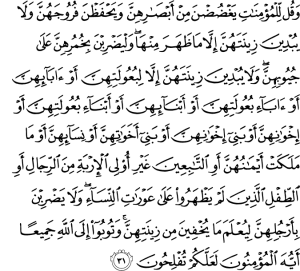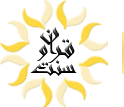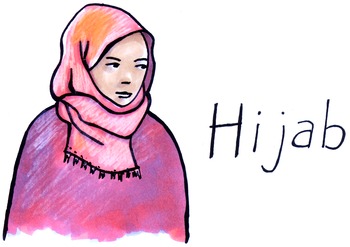Muslim Women Hijaab
Hijab for Muslim Women is a covering for care of chastity and an identity card to pronounce their respect for the laws of their Almighty Allah. It frees them from being valued for their looks, or body shape rather than their minds and intellect.
Dear Sisters!!!! Do you know that:
- There is a whole Surah in Qur’an with your name (Suratul Nisaa (women))
- The first martyr in Islam was a woman (Sumaya (RA))
- The first person who believed in the prophecies of prophet Muhammad (peace be upon him) was a woman (Khadeejah (RA))
- Purest Woman mentioned in Quran by Name – Maryam (RA)
- The last recommendation prophet Muhammad gave to his nation before he died was to treat you well (“Prayer, prayer, and what your right hand possesses.)
- You are the half of the society, and you raise the other half, how high your status is!
- To all men : Marrying a Woman completes half your faith
- Jannah (heaven) lies under the feet of your mother ( a woman)
- And because you are so precious, Islam honored you with Hijab for preserving your chastity and purity. You are not just a woman you are very special you are a gem, you are a Muslimah!
There are a myriad of reasons why Muslim women should wear hijab, but the easy, one sentence answer is, because they believe God has made it an obligation for believing women. In the Quran God tells the believing men and women to lower their gaze and to dress modestly. He (God) specifically addresses women when He asks them not to show off their adornment, except that which is apparent, and draw their veils over their bodies. The Quranic instructions are not only for women, there are instructions for men also.
Tell the believing men to lower their gaze and to be mindful of their chastity
This will be most conducive to their purity And to Allah is known Of all their action ( Quran 24: 30)

Tell the believing women to lower their gaze and to be mindful of their chastity
And not to display their charm (in public) beyond what may be (decent) apparently
Hence let them draw their head-coverings over their bosoms. And let them not display their charms. To any but their husbands, or their fathers.
Or their husbands’ fathers, or their sons, or their husbands’ sons or their brothers
Or their brothers’ sons
Or their sisters’ sons
Or their women
Or what their right hands own
Or such men as attend them, not having sexual desire
Or children who about women private parts are unaware
And let them not stamp their feet, so that their
Hidden ornaments are known in clear
And to Allah turn altogether
Oh believers, haply so you will prosper (Quran 24: 31)
These verses of Quran are known as the verses of hijab and it is the consensus of Islamic scholars that they make the wearing of hijab mandatory. Some countries, such as Saudi Arabia and Qatar do enforce a dress code. Women there are expected to cover their hair and wear some sort of loose fitting, full-length garment over their clothes. However, for the majority of Muslim women around the world, to cover, or not to cover, is a freely made choice. God requires Muslim women to dress modestly and to wear the hijab in public and in the presence of men who are not close relatives.
Although the English word scarf and the Arabic term hijab have become interchangeable, it is worth noting that hijab is more than just a scarf. It is a term that covers a variety of clothing including scarves, but also a variety of different dress styles from around the world. Many have cultural connotations such as the Pakistanishalwar khamis or the Afghani burqa, but whenever a Muslim woman covers “her adornment”, she is said to be wearing hijab.
The literal meaning of hijab is to veil, to cover, or to screen. Islam is known as a religion concerned with community cohesion and moral boundaries, and therefore hijab is a way of ensuring that the moral boundaries between unrelated men and women are respected. In this sense, the term hijab encompasses more than a scarf and more then a dress code. It is a term that denotes modest dressing and modest behaviour. For instance, if a Muslim woman was wearing a scarf but at the same time using bad language, she would not be fulfilling the requirements of hijab.
The majority of Muslim women wear hijab, to obey God, and to be known as respectable women.
Oh Prophet ! Say to your wives and daughters and the believing women
(When in public) that they draw veils close to them
It is likelier that they be recognized (as decent women) and avoid annoying
Allah is all-compassionate, all-forgiving (Quran 33: 59)
However, in the last 30 years hijab has emerged as a sign of Islamic consciousness. Many women see wearing the hijab as indicative of their desire to be part of an Islamic revival, especially in countries where the practice of Islam is discouraged or even forbidden.
While those who seek to ban hijab refer to it as a symbol of gender based repression, the women who choose to don a scarf, or to wear hijab, in the broadest sense of the word, do so by making personal decisions and independent choices. They view it as a right and not a burden. Nor do these women regard hijab as a sign of oppression. Women who wear hijab often describe themselves as being “set free” from society’s unrealistic fashion culture.
Hijab frees women from being thought of as sexual objects of desire or from being valued for their looks, or body shape rather then their minds and intellect. No longer slaves to consumerism, hijab liberates women from the need to conform to unrealistic stereotypes and images dictated by the media. Women wearing hijab have expressed that dressing modestly and covering their hair, minimises sexual harassment in the workplace. The aura of privacy created by hijab is indicative of the great value Islam places upon women.
It is true that in some families and in some cultures women are forced to wear hijab but this is not the norm. The Quran clearly states that there is no compulsion in religion.
There is no compulsion In the religion Right way has become clear From (the way of) error He who rejects the powers of evil And puts his faith in Allah, all Has indeed taken hold of a support most unfailing
Which shall never give way; for Allah is All-hearing; All-knowing (Quran 2: 256)
Women who choose to wear hijab do not make the decision lightly. In fact many women testify that they faced great animosity from their Muslim or non-Muslim families when they decided to cover. Across the globe there are numerous instances of women having to defend their right to wear the hijab.
Hijab can be a symbol of piety and it can be a sign of great inner strength and fortitude. A woman wearing hijab becomes a very visible sign of Islam. While Muslim men can blend easily into any society, Muslim woman are often put on the line, and forced to defend not only their decision to cover, but also their religion. Nevertheless, women who wear hijab insist that the advantages far outweigh any disadvantage conjured up by media bias or general ignorance.
“Why do Muslim women have to cover their heads?” This question is one which is asked by Muslim and non-Muslim alike. For many women it is the truest test of being a Muslim.
The answer to the question is very simple – Muslim women observe HIJAB (covering the head and the body) because Allah has told them to do so.






